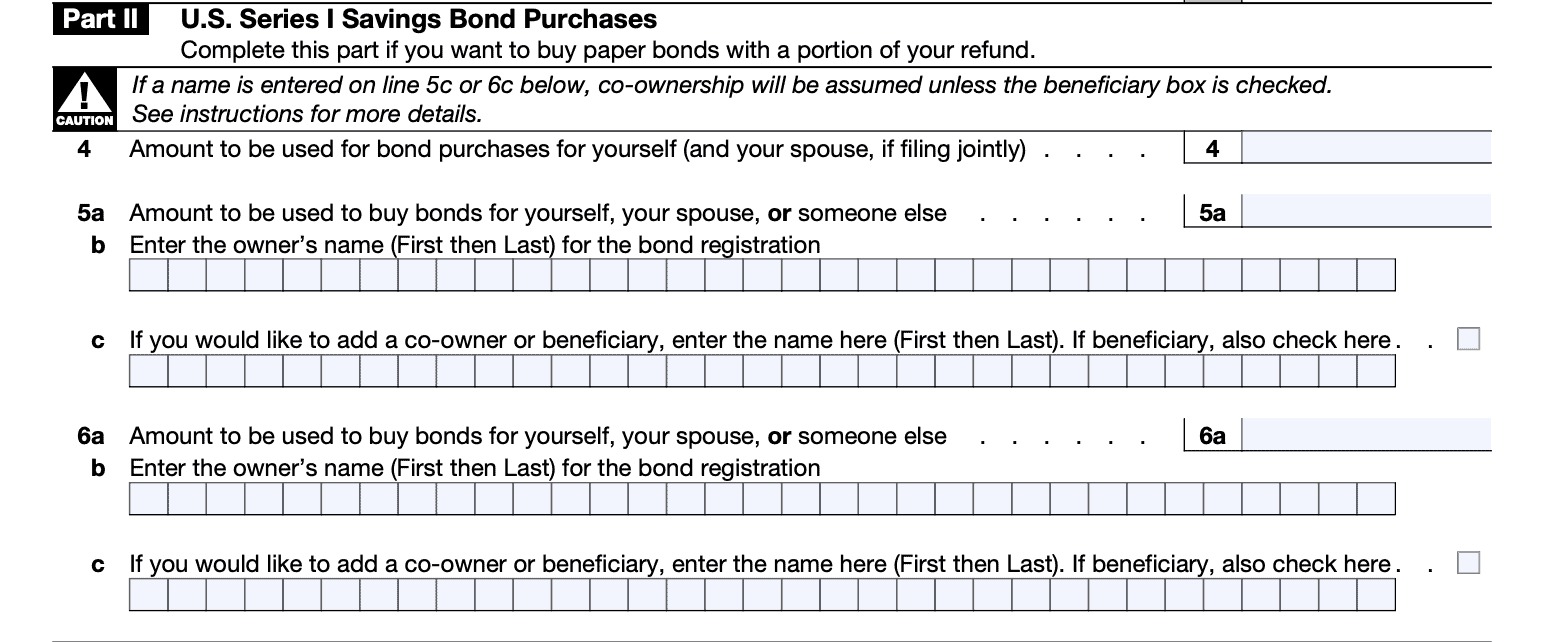

Finance
What Is Tip Credit On Paycheck
Modified: January 15, 2024
Learn about tip credit on paycheck and its implications for finance. Discover how this wage policy affects employees' earnings and employers' responsibilities.
(Many of the links in this article redirect to a specific reviewed product. Your purchase of these products through affiliate links helps to generate commission for LiveWell, at no extra cost. Learn more)
Table of Contents
What is Tip Credit on Paycheck
Tip credit on a paycheck refers to a unique system that allows employers in certain industries, such as hospitality and food service, to pay their employees less than the standard minimum wage. This is permissible as long as the employees receive enough tips to make up the difference between the lower wage and the regular minimum wage.
The concept of tip credit was introduced as a way to acknowledge the significant role that tips play in the livelihood of employees in service-based industries. It recognizes that tips can serve as a substantial portion of an employee’s income, and therefore allows employers to factor in these tips when determining the amount they need to pay their workers.
Under the Fair Labor Standards Act (FLSA) in the United States, the federal minimum wage is currently $7.25 per hour. However, for employees who regularly earn tips, the employer may apply a tip credit to the wages they pay.
One key aspect of tip credit is that it is only applicable if the employee’s tips, when added to the reduced wage, equal at least the standard minimum wage. If the employee’s tips fall short, the employer is legally required to make up the difference so that the worker is still receiving the full minimum wage.
It’s important to note that employees must be properly informed about tip credit and how it affects their earnings. Employers are responsible for providing clear and accurate information on how the tip credit will be applied to their pay, ensuring compliance with labor laws.
In summary, tip credit on a paycheck is a mechanism that allows employers in certain industries to pay their employees a lower cash wage, as long as their tips bring their total earnings up to the standard minimum wage. Understanding tip credit is crucial for both employees and employers to ensure compliance with labor laws and to maintain fair and equitable compensation in the service industry.
Overview
Tip credit is a system that allows employers in specific industries to pay their employees a lower cash wage, as long as the employee earns enough tips to bring their total compensation up to the standard minimum wage. While tip credit can be advantageous for employers in industries where tipping is common, it is important to understand the laws and regulations surrounding its application to ensure compliance.
The concept of tip credit aims to recognize the significant role that tips play in the income of employees in service-based industries, such as restaurants, hotels, and bars. By allowing employers to factor in tips when determining wages, it acknowledges that tips are an integral part of an employee’s compensation.
Under the Fair Labor Standards Act (FLSA) in the United States, the federal minimum wage is $7.25 per hour. However, for employees who regularly receive tips, employers can credit a portion of those tips towards their cash wage. The amount of tip credit that can be applied varies by state, and it is important for both employees and employers to be aware of the specific regulations in their jurisdiction.
It is crucial for employees to understand how tip credit impacts their earnings. While they may receive a lower cash wage, the expectation is that their tips will supplement their pay and bring their total earnings up to the standard minimum wage. If an employee’s tips fall short of the minimum wage, the employer is required to make up the difference to ensure compliance with labor laws.
For employers, tip credit can help manage labor costs in industries where tipping is customary. However, it is important to note that there are limitations and regulations in place to protect employees. Employers must properly inform their employees about tip credit, accurately calculate the tip credit amount, and maintain the necessary documentation to demonstrate compliance with labor laws.
This article will delve into the specifics of tip credit, including laws and regulations, its implications for employees and employers, the calculation of tip credit, and tips for both parties to navigate this system effectively and legally.
Understanding Tip Credit
Tip credit is a system that allows employers in certain industries to pay their employees a reduced cash wage, with the expectation that the employees will earn enough tips to bring their total earnings up to the standard minimum wage. It is important to understand how tip credit works and its implications for both employees and employers.
One of the key aspects of tip credit is that it applies only to employees who regularly receive tips as part of their job. This typically includes occupations such as waitstaff, bartenders, hotel service personnel, and other front-of-house roles in the hospitality industry. It does not apply to employees who are not customarily tipped, such as kitchen staff or janitors.
When utilizing tip credit, employers are allowed to pay their tipped employees a cash wage that is lower than the standard minimum wage. The actual amount of the cash wage varies depending on the state and local laws, as well as the industry. The employer must ensure that the employee’s tips, when combined with the reduced cash wage, meet or exceed the standard minimum wage.
For example, let’s assume the federal minimum wage is $10 per hour. If an employee is eligible for tip credit and the employer takes advantage of it, they may pay the employee a cash wage of $2.13 per hour, with the expectation that the employee will earn at least $7.87 per hour in tips to reach the minimum wage of $10 per hour.
It is important to note that if the employee’s tips fall short and do not bring the total earnings up to the minimum wage, the employer is legally required to make up the difference. This provision ensures that employees are guaranteed to earn at least the standard minimum wage, even if their tips are insufficient. However, employers are not required to make up the difference if the employee’s tips exceed the minimum wage.
Additionally, tip credit calculations are typically done on a weekly basis, rather than on a daily basis. This means that an employee’s total tips and cash wage from a week are compared to the total hours worked during that week to determine if the minimum wage requirement has been met.
In summary, tip credit allows employers to pay tipped employees a reduced cash wage, with the expectation that tips will make up the difference to reach the standard minimum wage. It is important for both employees and employers to understand the specific laws and regulations regarding tip credit in their jurisdiction to ensure compliance and fair compensation.
Laws and Regulations
Tip credit is subject to specific laws and regulations to protect the rights of employees and ensure fair compensation. Understanding these laws is crucial for both employees and employers to comply with legal requirements. Here are some key laws and regulations related to tip credit:
Fair Labor Standards Act (FLSA): The FLSA is a federal law in the United States that establishes minimum wage, overtime pay, and other employment standards. It allows employers to apply tip credit towards the minimum wage for employees who regularly receive tips. However, employers must adhere to specific guidelines to ensure compliance with the law.
State and Local Laws: In addition to the federal laws, state and local governments may have their own laws and regulations regarding tip credit. These laws can vary from one jurisdiction to another, so it is important for both employees and employers to be aware of the specific requirements in their area.
Notice and Disclosure: Employers are required to inform employees about the tip credit system. This includes informing them about the reduced cash wage they will receive, the tip credit amount, and how tips will be calculated and distributed. Employers must also provide this information in writing to employees.
Minimum Wage Requirements: While tip credit allows employers to pay a reduced cash wage, it is essential that the total earnings of employees, including tips and cash wages, meet or exceed the standard minimum wage. If an employee’s tips do not bring them up to the minimum wage, the employer is legally obligated to make up the difference.
Record-Keeping Requirements: Employers are required to maintain accurate records of the tips received by their employees. This includes documenting the total tips received and any tip pooling or sharing arrangements. It is important for employers to keep detailed records to demonstrate compliance with the law.
Service Charges and Tip Pools: Some establishments may add mandatory service charges to the bill or have tip pooling arrangements. Employers must ensure that these service charges are distributed appropriately to employees and that tip pooling is done in accordance with the law.
Employee Rights: Employees have rights regarding tips and tip credit. They should understand their right to retain all tips received, except for valid tip pooling arrangements. Employers are prohibited from retaining any portion of an employee’s tips, regardless of tip credit usage.
It is important for employees to be aware of their rights and employers to understand their responsibilities to ensure compliance with laws and regulations surrounding tip credit. Both parties should stay informed and seek legal advice if they have any questions or concerns about their rights and obligations.
Implications for Employees
Tip credit has several implications for employees, both positive and potentially negative. Understanding these implications is essential for employees who work in tipped positions, as it directly affects their earnings and overall compensation. Here are some key implications to consider:
Potential for Higher Earnings: One of the main advantages of tip credit for employees is the potential to earn higher wages. Tipped positions often have the opportunity to earn additional income through tips, which can significantly supplement the lower cash wage. Depending on the establishment and the level of service provided, employees may have the chance to earn substantial tips.
Income Fluctuations: While tip credit can result in higher earnings, it also introduces income fluctuations. Tips can vary greatly from shift to shift and can be influenced by factors such as the number of customers, the level of service provided, and customer generosity. As a result, employees may experience inconsistencies in their income, making it important to budget and plan accordingly.
Dependence on Tips: Tipped employees rely heavily on tips as a significant portion of their income. Since the cash wage is lower than the standard minimum wage, employees must consistently earn sufficient tips to bring their total earnings up to the minimum wage. This dependence on tips can create additional pressure to provide excellent customer service and maintain a positive relationship with customers.
Tip Pooling: In certain establishments, tip pooling may be practiced. Tip pooling involves combining a portion of tips received by multiple employees and redistributing them amongst the staff. While tip pooling can create a sense of teamwork, it can also lead to mixed feelings if the distribution is not equitable or if employees believe they are not receiving an appropriate share of the pooled tips.
Protecting Rights: Employees must understand their rights when it comes to tip credit. Employers are not allowed to retain any portion of an employee’s tips, regardless of utilizing tip credit. Employees have the right to retain all tips they receive unless they are participating in a valid tip pooling arrangement. It is important for employees to be aware of these rights and to report any violations to the appropriate authorities.
Communication and Documentation: Open communication between employees and employers is crucial. Employers must clearly communicate the tip credit system, including the reduced cash wage, the tip credit amount, and any tip pooling arrangements. Employees should keep track of their tips and regularly review their pay stubs and related documentation to ensure accuracy and address any discrepancies.
Tips can provide a significant source of income for employees in service-based industries, and tip credit allows employers to pay a reduced cash wage with the expectation that employees will earn enough tips to reach the minimum wage. Understanding the implications of tip credit empowers employees to make informed decisions and protect their rights while navigating the unique compensation structure of tipped positions.
Implications for Employers
Employers in industries where tipping is prevalent face several implications when utilizing tip credit for their employees. Understanding these implications is vital for employers to comply with labor laws, manage labor costs, and create a fair and equitable work environment. Here are some key implications for employers:
Managing Labor Costs: Tipped positions enable employers to lower their cash wage expenses through tip credit. By paying a reduced cash wage, employers can offset labor costs, particularly in industries with high tip earnings potential. This can help employers maintain competitiveness and manage their overall operational expenses.
Compliance with Labor Laws: Employers must follow specific laws and regulations related to tip credit to ensure compliance. This includes properly informing employees about tip credit, accurately calculating tip credit amounts, and maintaining documentation of tips and pay records. Non-compliance can result in legal penalties and damage to the business’s reputation.
Providing Clear Communication: Employers have a responsibility to clearly communicate the details of tip credit to their employees. This includes informing employees about the reduced cash wage, the tip credit amount, and any tip pooling arrangements. Transparent communication helps avoid misunderstandings, maintains trust, and fosters a positive work environment.
Monitoring Tip Reporting: Employers should establish procedures to ensure accurate tip reporting from employees. This includes educating employees about their legal obligations to report tips to the employer for tax purposes and encouraging compliance. Monitoring tip reporting helps maintain accurate records and ensures adherence to tax regulations.
Tip Pooling: Some establishments may implement tip pooling arrangements where tips are combined and distributed amongst employees. Employers must ensure tip pooling is done within legal parameters, with fair distribution among eligible employees. Clear policies related to tip pooling can minimize disputes and promote cooperation among team members.
Employee Morale and Retention: Adequate compensation and fair treatment are essential for promoting employee morale and retention. Employers should ensure that employees perceive tip credit as a fair system and feel adequately compensated for their work. Establishing a positive work environment, recognizing exceptional service, and providing opportunities for career growth can enhance employee loyalty and retention.
Record-Keeping and Documentation: Employers are responsible for maintaining accurate records of tips received by employees, including any tip credits applied. Detailed record-keeping helps demonstrate compliance with labor laws and facilitates the resolution of any disputes related to wage calculations or tip distribution. Employers should keep records for the required time period as mandated by relevant regulations.
Legal Compliance Reviews: Employers should periodically review labor laws and regulations surrounding tip credit to ensure ongoing compliance. It is advisable to consult legal counsel or engage with human resource professionals to stay updated on any changes and to implement best practices in tip credit management.
By understanding the implications of tip credit, employers can effectively navigate the unique compensation structure of tipped positions, comply with labor laws, and foster a positive work environment for their employees. Proper implementation of tip credit can help employers manage labor costs while ensuring fair compensation for their valuable workforce.
Calculation of Tip Credit
The calculation of tip credit involves determining the reduced cash wage that an employer can pay to tipped employees, taking into account the tips received by those employees. It is essential for both employees and employers to understand how tip credit is calculated to ensure compliance with labor laws. Here is an overview of the calculation process:
Step 1: Determine the Standard Minimum Wage: The first step in calculating tip credit is to identify the applicable minimum wage. This could be the federal minimum wage or the minimum wage set by the state or local government, depending on the jurisdiction where the employee is located.
Step 2: Subtracting the Tip Credit Amount: Once the minimum wage is established, the employer can calculate the tip credit amount. This is done by subtracting the tip credit rate from the standard minimum wage. The tip credit rate is the amount that can be credited towards the minimum wage, and it varies by jurisdiction and industry. It is important for employers to consult the relevant labor laws to determine the specific tip credit rate applicable to their employees.
Step 3: Determine the Reduced Cash Wage: After calculating the tip credit amount, the employer should determine the reduced cash wage that will be paid to the employee. This is the cash wage that is less than the standard minimum wage and is equal to the difference between the tip credit amount and the minimum wage.
Step 4: Total Earnings Required: To ensure compliance with labor laws, employers must ensure that the employee’s total earnings, including tips and the reduced cash wage, meet or exceed the standard minimum wage. If the employee’s tips fall short of the minimum wage, the employer must make up the difference to ensure compliance.
For example, let’s assume the standard minimum wage is $10 per hour and the tip credit rate is $5 per hour. With a tip credit rate of $5 per hour, the employer can pay a reduced cash wage of $5 per hour. To meet the minimum wage requirement, the employee must earn at least $5 per hour in tips.
Employers should note that tip credit calculations are typically done on a weekly basis. This means that the total tips and cash wages earned by the employee over the course of a week are compared to the total hours worked during that week to determine if the minimum wage requirement has been met.
It is crucial for employers to accurately calculate tip credit amounts, ensure that the reduced cash wage is properly applied, and maintain documentation of the calculation process. Adhering to these calculations helps employers comply with labor laws and avoid potential legal issues related to wages and tip credit.
Maximum Tip Credit Allowed
The maximum tip credit allowed refers to the highest amount that employers can apply towards the cash wage of tipped employees while still ensuring compliance with labor laws. This maximum tip credit rate varies by jurisdiction and industry, and it is important for employers to understand the specific regulations to avoid any violations. Here are some key considerations regarding the maximum tip credit allowed:
Variation by Jurisdiction: The maximum tip credit allowed can vary depending on the jurisdiction, such as federal, state, or local laws. The tip credit rate may differ from one location to another, so employers must consult the applicable regulations to determine the specific maximum tip credit rate that is allowable in their area.
Industry-Specific Rates: The maximum tip credit rate can also vary based on the industry in which the employee works. Different industries, such as restaurants, hotels, or bars, may have specific tip credit rates set by labor laws. It is crucial for employers to familiarize themselves with the regulations pertaining to their particular industry to ensure compliance.
Minimum Wage Compliance: Employers must ensure that when applying the tip credit, the employee’s total earnings, including tips and the reduced cash wage, meet or exceed the standard minimum wage. If an employee’s tips fall short of the minimum wage, the employer must make up the difference to ensure compliance.
Tipped Employee Responsibilities: It is important for employers to educate tipped employees about their responsibilities in reporting tips to accurately calculate tip credit. Employees should understand their obligation to accurately report tips to the employer, as it impacts the calculation of tip credit and ensuring compliance with minimum wage requirements.
Regular Review of Laws and Regulations: The maximum tip credit allowed may change over time due to updates in labor laws and regulations. Employers should regularly review applicable laws and consult with legal counsel or human resource professionals to ensure that they remain up to date and in compliance with the latest regulations.
By understanding the maximum tip credit allowed, employers can properly calculate and apply tip credit in accordance with labor laws. Adhering to the specific regulations pertaining to the jurisdiction and industry ensures fair compensation for tipped employees while providing employers with clarity on managing labor costs within legal boundaries.
Reporting and Documentation
Accurate reporting and documentation are crucial when it comes to tip credit. Employers must keep detailed records related to employee tips, cash wages, and tip credit calculations to ensure compliance with labor laws and demonstrate transparency. Here are some key considerations for reporting and documentation:
Record-Keeping Requirements: Employers are required to maintain complete and accurate records of all tips received by their employees. This includes the total tips reported by each employee, any tip pooling or tip sharing arrangements, and the calculation of tip credit. These records should be kept for the required duration as mandated by labor laws.
Recorded Hours: It is important for employers to keep records of the hours worked by employees in conjunction with tip credit calculations. This helps ensure compliance with minimum wage requirements, as well as accurately calculate overtime pay if applicable.
Pay Stub Documentation: Employers should provide clear and detailed pay stubs or wage statements to employees. This documentation should clearly indicate the reduced cash wage paid, the amount of tip credit applied, and the total amount of tips earned by the employee. Clear transparency on pay stubs helps employees understand how their compensation is calculated.
Employee Reporting: Employers should educate employees about their responsibility to report all tips received accurately. It is essential for employees to report tips promptly and accurately to ensure that tip credit calculations are done correctly and that all earnings are accounted for.
Tip Pooling Records: If tip pooling or tip sharing arrangements exist, employers must maintain documentation outlining the distribution of tips and the agreement in place. This documentation should clearly outline the pooling structure and how tips are allocated among the eligible employees.
Consistency and Accuracy: Employers must be consistent and accurate in their reporting and documentation practices. Any discrepancies or errors should be promptly rectified and properly documented. Compliance with record-keeping requirements helps protect employers from potential legal issues and supports fair compensation practices.
Access and Retention of Records: Employers are required to provide employees with reasonable access to their tip and wage records upon request. Additionally, employers must retain these records for the specified duration as required by labor laws. This allows employees and relevant authorities to verify compliance and resolve any wage-related disputes.
Audit and Legal Compliance: Employers should proactively conduct internal audits to review their reporting and documentation practices related to tip credit. This helps ensure compliance with labor laws, identifies any areas of improvement, and establishes proper processes for reporting and record-keeping.
By implementing effective reporting and documentation practices, employers can accurately calculate and apply tip credit, maintain compliance with labor laws, and provide transparency to employees. Sound documentation supports good record-keeping practices, protects against potential legal issues, and promotes a fair and equitable work environment.
Tips for Employees and Employers
Both employees and employers play a vital role in navigating the complexities of tip credit and ensuring compliance with labor laws. Here are some tips for both parties to effectively manage tip credit and promote a fair and productive work environment:
For Employees:
- Understand Your Rights: Educate yourself on the labor laws and regulations related to tip credit in your jurisdiction. Be aware of your rights regarding tips, minimum wage requirements, and proper reporting.
- Accurate Reporting: Report your tips accurately and promptly to your employer, ensuring that all tips are accounted for. Responsible reporting helps ensure accurate tip credit calculations and compliance with labor laws.
- Maintain Documentation: Keep a record of your tip earnings, including written records or digital documentation. This can help resolve any disputes and provide clarity on your total earnings.
- Communication with Employer: Maintain open lines of communication with your employer regarding tip credit policies, tip pooling arrangements, and any concerns or discrepancies related to your compensation.
- Professionalism and Customer Service: Provide exceptional customer service to encourage higher tip earnings. Satisfied customers are more likely to leave generous tips, which can positively impact your overall earnings.
- Advocate for Fair Treatment: If you suspect that your employer is not complying with tip credit regulations or is improperly handling tip distributions, seek advice from legal counsel or relevant authorities to protect your rights.
For Employers:
- Know the Laws: Familiarize yourself with the labor laws and regulations specific to tip credit in your jurisdiction and industry. Stay updated on any changes to ensure compliance with legal requirements.
- Educate Your Employees: Clearly communicate the policies and procedures regarding tip credit, reduced cash wage, tip pooling, and reporting responsibilities. Provide written documentation to ensure clarity and understanding.
- Accurate Calculations: Calculate tip credit accurately, ensuring that employees’ total earnings, including both tips and the reduced cash wage, meet or exceed the minimum wage requirements. Regularly audit and review your calculations to minimize errors and ensure compliance.
- Maintain Proper Documentation: Keep detailed records of tip credit calculations, tip pooling agreements, and employee tip reports. Retain these records for the required duration as mandated by labor laws.
- Regular Audits and Reviews: Conduct internal audits to review compliance with tip credit laws, reporting processes, and documentation practices. Address any non-compliance issues promptly and implement corrective measures as necessary.
- Transparent Communication: Foster open communication with your employees regarding tip credit policies, updated regulations, and any changes that may impact their compensation. Encourage employees to raise concerns or questions.
- Address Disputes Promptly: If disputes arise regarding tip distributions or tip credit calculations, take timely action to address and resolve these issues. Prompt resolution helps maintain a positive work environment and prevent potential legal repercussions.
By following these tips, employees and employers can navigate tip credit effectively, ensuring compliance with labor laws, promoting fair compensation, and fostering a harmonious working relationship. Open communication, accurate documentation, and a commitment to fairness are key in successfully managing tip credit in the workplace.
Conclusion
The concept of tip credit on a paycheck is designed to acknowledge the significant role that tips play in the income of employees in service-based industries. By allowing employers to factor tips into their calculations, tip credit helps balance the lower cash wages paid to tipped employees with the expectation that tips will make up the difference and bring their total earnings up to at least the standard minimum wage. However, it is crucial for both employees and employers to understand the laws, regulations, and requirements surrounding tip credit to ensure compliance and fair compensation.
For employees, understanding tip credit empowers them to accurately report tips, advocate for their rights, and effectively budget their earnings. It is important for employees to communicate with their employers, maintain accurate records, and be aware of their obligations regarding tip reporting. By doing so, employees can navigate the complexities of tip credit and ensure they receive fair compensation for their hard work.
Employers also have responsibilities when it comes to tip credit. They must educate employees about tip credit policies, properly calculate tip credits, and maintain accurate records and documentation. Employers should regularly review labor laws, communicate transparently, and foster a positive work environment that promotes fair treatment and compliance.
Both employees and employers should prioritize accurate reporting, clear communication, and proper documentation to ensure compliance with labor laws and maintain a fair and equitable compensation system. Understanding tip credit and its implications allows both parties to navigate this unique system while fostering a positive and productive work environment.
In conclusion, by adhering to the guidelines and regulations surrounding tip credit, employees and employers can work together to create an environment that values the contributions of each individual while ensuring fair compensation and compliance with the laws that govern tip credit on a paycheck.














